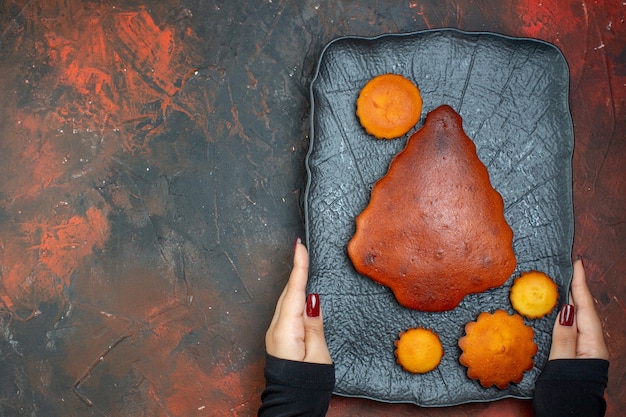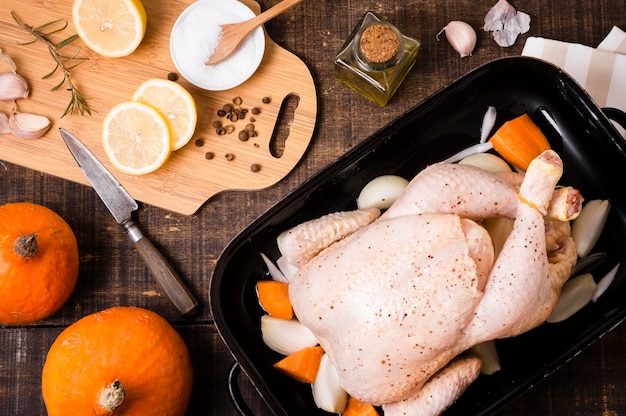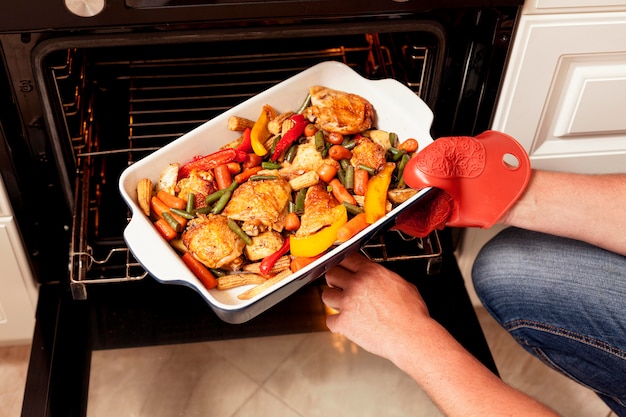I'm a firm believer that sometimes the simplest things in life are the most satisfying. And when it comes to cooking, that definitely applies to chicken thighs. They're versatile, forgiving, and always turn out juicy and flavorful – even when I'm feeling a bit lazy in the kitchen. Plus, they're incredibly affordable, which is always a bonus. Today, I'm going to share my foolproof method for cooking perfect stovetop chicken thighs, a technique that's saved me from countless bland meals and made me a hero in the eyes of my family (and, let's be honest, myself).
Part 1: Why Stovetop?

You might be thinking, "Stovetop? Why not just roast them or bake them?" And you'd be right – those methods can be great. But there's something about the simplicity and control of stovetop cooking that I really love. You can hear the sizzling, see the browning, and adjust the heat as needed. It's a more hands-on approach, and for me, that means a more satisfying final product. You can literally watch the transformation happen right in front of your eyes, which is incredibly rewarding for someone like me who loves the visual aspect of cooking.
The Advantages of Stovetop Cooking
- Speed: No preheating oven required, just a hot pan and you're good to go. This is perfect for those nights when you're craving a delicious meal but don't have hours to spend in the kitchen.
- Crispness: The high heat creates a beautifully crispy skin. It's the kind of crispy you can hear, and it adds so much texture and flavor. This method gives you that perfect balance of tender, juicy meat and a satisfyingly crunchy exterior.
- Flexibility: You can easily adjust the cooking time and heat to suit your needs. Need a quick dinner? No problem. Want them cooked through to perfection? You've got it. You can also easily adjust the cooking method based on your desired outcome. For example, if you want a more tender chicken, you can lower the heat and cover the pan with a lid.
Part 2: Choosing the Right Chicken

The key to great chicken thighs starts with choosing the right ones. It's like building a house - you need a solid foundation. Let's break down what to look for at the supermarket.
Bone-in or Boneless?
This is a personal preference, but for stovetop cooking, I prefer bone-in thighs. The bones help to keep the meat moist and tender during cooking. They also add a delicious depth of flavor to the finished dish. Plus, bone-in thighs tend to be more affordable, which is always a win in my book. The bone acts like a natural flavor enhancer, adding a richness that you won't find in boneless thighs.
Skin-on or Skin-off?
Again, it's up to you. Skin-on thighs will give you that crispy exterior I mentioned before, but skin-off thighs are a bit leaner. If you're watching your calories, skin-off might be the way to go. But personally, I can't resist that crispy skin – it's pure magic. It's a textural contrast that elevates the entire dish and adds a satisfying crunch. It's also a good source of flavor and moisture, as the fat renders during cooking.
Fresh or Frozen?
While fresh chicken is ideal, frozen thighs are a great option for when you're in a pinch. Just make sure to thaw them completely before cooking. The best way to thaw is in the refrigerator overnight, but if you're short on time, you can also thaw them in a bowl of cold water, making sure to change the water every 30 minutes. Be sure to pat them dry with paper towels before cooking to remove excess moisture.
Part 3: Prepping the Chicken

Now that you've got your chicken, it's time to get them ready for the stovetop. This might seem like a simple step, but it's important for ensuring the best flavor and texture.
Patting Dry
This step might seem simple, but it's crucial. Excess moisture on the chicken will make it steam instead of crisp up nicely. So, pat those thighs dry with paper towels, making sure to get into all the crevices. This will help create a crispy skin and prevent the chicken from steaming in its own juices.
Seasoning the Chicken
This is where you get to unleash your creativity. While salt and pepper are always good choices, there are countless other options. Here are some of my favorites:
- Herbs: Rosemary, thyme, oregano, sage – these all work wonderfully with chicken. Just a sprinkle of your favorite blend can make a world of difference. Herbs not only add flavor but also bring a beautiful aroma to your kitchen.
- Spices: Paprika, cumin, garlic powder, onion powder, chili powder – these add layers of flavor and complexity. Experiment and find what you like best! Spices can really take your chicken to the next level, adding depth and warmth.
- Citrus: A squeeze of lemon or orange juice can add a bright and refreshing touch. Citrus juice also helps to tenderize the chicken and enhance the flavor.
When seasoning, I like to use a generous hand. I find that the flavor really penetrates the chicken when you don't hold back. You can always adjust the seasoning to your taste, but I prefer to start with a good amount to ensure the chicken is well-seasoned throughout.
Part 4: Selecting the Right Pan
The pan you use for stovetop cooking can make a big difference. A good quality pan with even heat distribution is essential for achieving that crispy, golden-brown exterior. And let's be honest, we all want that. This is what transforms a good chicken thigh into a truly memorable dish.
Cast Iron: The Classic Choice
cast iron skillets are a classic for a reason. They retain heat incredibly well, which is ideal for searing chicken thighs. They also get seasoned over time, which adds a subtle, almost nutty flavor to your food. The only drawback is that they can be heavy, but trust me, they're worth the effort. The heat retention of cast iron is unmatched, allowing for even cooking and a beautifully caramelized exterior.
Stainless Steel: A Versatile Option
stainless steel pans are another great choice for stovetop cooking. They heat up quickly and evenly, and they're easier to clean than cast iron. Just make sure you're using a good quality pan with a thick base to prevent warping. Stainless steel is a great all-around option, offering versatility and durability.
Non-Stick: A Convenience Choice
While not my personal preference for searing chicken, non-stick pans can be convenient. They help prevent sticking and make cleanup a breeze. However, they don't get as hot as cast iron or stainless steel, which can result in a less crispy skin. Non-stick pans are best for dishes that don't require browning or searing, such as cooking chicken in a sauce.
Part 5: The Cooking Process: Sizzling Perfection
Now for the exciting part - the cooking itself. This is where all the prep work comes together. Follow these steps to achieve perfectly cooked chicken thighs every time.
High Heat, Sizzle, and Patience
The key to cooking perfect chicken thighs on the stovetop is high heat. Preheat your chosen pan over medium-high heat. You'll know it's ready when a drop of water sizzles and evaporates instantly. This indicates the pan is hot enough to sear the chicken and achieve a crispy skin.
Sealing the Chicken
Once the pan is hot, add the chicken thighs. Don't overcrowd the pan – you want them to have space to brown evenly. You want to achieve a beautiful golden-brown crust, so don't move them around too much. Let them cook undisturbed for about 3-4 minutes per side. You'll know they're ready to flip when they release easily from the pan. This is called searing, and it's crucial for developing that rich, flavorful crust. This initial searing seals in the juices and creates a crispy exterior.
Adjusting the Heat
After you've seared both sides, reduce the heat to medium. You want to cook the chicken through without burning it. Continue cooking for another 5-7 minutes per side, or until the internal temperature reaches 165°F (74°C). This ensures the chicken is cooked thoroughly while maintaining its tenderness. Use a meat thermometer to check the internal temperature, making sure it's cooked through but not overcooked.
Using a Thermometer
A meat thermometer is your best friend when it comes to cooking chicken. It takes the guesswork out of cooking and ensures that the chicken is cooked through safely. Insert the thermometer into the thickest part of the thigh, making sure not to touch the bone. The thermometer will give you an accurate reading, ensuring the chicken is cooked to a safe internal temperature.
Part 6: The Finishing Touch
Your chicken is almost ready, but there are a few finishing touches that can elevate it to the next level. These simple steps can make all the difference in the final flavor and texture.
Resting the Chicken
After the chicken is cooked, let it rest for 5-10 minutes before slicing and serving. This allows the juices to redistribute, resulting in a more tender and flavorful chicken. This is a common technique for all types of meat, as it allows the juices to settle back into the meat, resulting in a more evenly moist and flavorful dish.
Making a Sauce
The pan juices that are left after cooking are pure gold. They're full of flavor, and you can easily turn them into a delicious sauce. Just add a splash of broth, wine, or even water to deglaze the pan, scraping up the browned bits. Then, simmer the sauce until it's reduced and thickened to your liking. I like to add a pat of butter for richness. This is called deglazing the pan, and it's a simple but effective way to create a delicious sauce using the flavorful bits that are stuck to the bottom of the pan.
Serving Suggestions
These stovetop chicken thighs are incredibly versatile. Here are a few ideas for serving them:
- Classic: Serve them with mashed potatoes, gravy, and green beans. This is a classic combination that never fails to please.
- Mediterranean: Add a lemon-herb sauce, serve with couscous, and top with chopped olives and feta cheese. This is a light and refreshing option that's perfect for summer.
- Asian-inspired: Serve them over rice with a stir-fried vegetable medley and a soy-ginger sauce. This is a flavorful and aromatic dish that's perfect for a weeknight meal.
- Spicy: Use a spicy rub and serve with a side of creamy coleslaw. This is a great option for those who like a little heat.
Part 7: Leftover Love
You've cooked up a storm, but there are leftover chicken thighs. Don't despair – they're a blessing in disguise! Here's what you can do:
chicken salad
Chop up the leftover chicken and mix it with mayonnaise, celery, onion, and your favorite seasonings. Serve it on sandwiches, salads, or crackers. This is a classic way to use leftover chicken, and it's incredibly versatile.
Chicken Soup
Use the leftover chicken to make a hearty chicken soup. Add vegetables, noodles, and broth, and simmer until the flavors meld. It's comfort food at its finest. This is a great way to use up leftover chicken and create a nourishing and satisfying meal.
Chicken Quesadillas
Chop the chicken and layer it on tortillas with cheese and your favorite toppings. Grill or pan-fry the quesadillas until the cheese melts and the tortillas are golden brown. This is a quick and easy way to use up leftover chicken, and it's perfect for a casual meal or snack.
Chicken Enchiladas
Combine the leftover chicken with enchilada sauce, cheese, and your favorite fillings. Roll the mixture into tortillas and bake until heated through and bubbly. This is a flavorful and satisfying way to use up leftover chicken, and it's perfect for a family meal or potluck.
Part 8: FAQs
Q: Can I use chicken breasts instead of thighs?
Yes, you can, but keep in mind that they will cook much faster. They'll also be more prone to drying out, so make sure to cook them over medium heat and watch them closely. It's also a good idea to use a meat thermometer to ensure they're cooked through without being overcooked. Chicken breasts tend to be leaner than thighs, so they require more attention to avoid overcooking.
Q: How long do I cook the chicken thighs for?
The cooking time will vary depending on the size and thickness of the thighs. It's best to check the internal temperature with a meat thermometer to ensure they're cooked through to 165°F (74°C). This is the safest way to ensure the chicken is cooked through, and it also helps to prevent overcooking.
Q: What if the chicken is sticking to the pan?
If the chicken is sticking, it's likely that the pan isn't hot enough. Increase the heat slightly, but be careful not to burn the chicken. You can also try adding a bit of fat to the pan, such as butter or oil. This will help to prevent sticking and create a better sear.
Q: Can I cook chicken thighs in a dutch oven?
Absolutely! A Dutch oven is a great option for stovetop cooking. It's large enough to accommodate several chicken thighs, and it retains heat well. This is a great option for larger batches of chicken thighs, as the Dutch oven's even heat distribution ensures even cooking.
Q: What are some tips for making crispy skin?
To get the crispiest skin, make sure the chicken thighs are completely dry before cooking. Use high heat to sear the chicken for a few minutes on each side, and avoid moving them around too much. You can also try adding a little bit of fat to the pan, such as butter or oil. This will help to render the fat and create a crispy skin.
Part 9: My Stovetop Chicken Journey: A Confession
Okay, I'll admit it. I used to be terrified of cooking chicken. The thought of undercooked poultry sent shivers down my spine. Then, I discovered the magic of stovetop cooking. It's allowed me to relax and enjoy the process, and it's given me the confidence to create delicious and satisfying meals. This method has truly been a game-changer for me. It's a method that anyone can master, and it's a great way to impress your family and friends with a simple yet delicious meal.
I hope you give it a try! And if you have any tips or tricks to share, please do! I'm always learning and refining my technique. Happy cooking!
Everyone is watching

Corn on the Cob: The Ultimate Guide to Perfectly Cooked Ears
Healthy MealsAh, corn on the cob. Just the name evokes images of sunny days, barbecues, and that sweet, juicy flavour that ...

Scallops: The Ultimate Guide to Perfect Cooking
Healthy MealsAh, scallops. Those delicate, sweet, and utterly delicious morsels of the sea. They hold a special place in my...

Spaghetti Squash: The Ultimate Guide to Cooking and Serving
Healthy MealsRemember that time you saw spaghetti squash at the supermarket, looking all bumpy and strange, and thought, "W...

Salmon Cooking Times: Perfect Guide for Every Recipe
Healthy MealsLet me tell you, cooking salmon is an art form. It's all about getting that perfect balance: juicy and tender,...

Ham Cooking Time: How Long to Bake, Smoke, or Boil a Delicious Ham
Healthy MealsAh, ham. It's a classic, isn't it? A real crowd-pleaser, especially around holidays. And when done right, it'...
